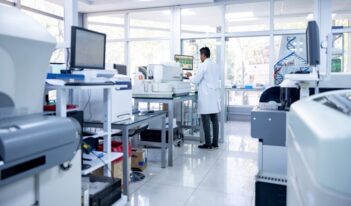
Scholar argues in favor of proposal to regulate lab-developed tests as medical devices.
Before they can be commercially available, high-risk, life-sustaining medical devices such as pacemakers, HIV tests, and automated external defibrillators (AED) must undergo the Food and Drug Administration’s (FDA) premarket approval process—an extensive series of steps involving rigorous testing for safety and efficacy. Until recently, however, a decades-old exemption enabled a subset of diagnostic devices called Laboratory-Developed Tests (LDTs) to bypass this process completely. As a result, more than 11,000 medical diagnostic tests on the market have never been tested for accuracy, risks, or side effects.
But last July—in a move that drew both high praise and fierce opposition—the FDA announced that it would consider placing LDTs under federal oversight for the first time in history.
In a recent article, Joshua Sharfstein—Associate Dean at the Johns Hopkins School of Public Health and former Secretary of the Maryland Department of Health and Mental Hygiene— argues that the agency’s proposal is a long-overdue victory for patients.
When medical device regulation began in the 1970s, lab-developed tests generally entailed hospital laboratories manually assessing individual patients, explains Sharfstein. LDTs were truly customized and used on a limited basis. But with the advent of technological innovation, private laboratory companies began widely marketing risky, highly complex, and automated LDTs that were largely indistinguishable from traditional medical devices, says Sharfstein.
Sharfstein shows that these changes have generated myriad new concerns for patients. He says that the FDA has uncovered problems with lab-developed tests such as falsification of data and empirically unsupported claims. These problems, according to the FDA, could have led to over- or under-treatment for heart disease, cancer patients’ receipt of incorrect or ineffective care, erroneous autism diagnoses, or superfluous antibiotics treatment. Most worrisome to Sharfstein is the fact that the FDA cannot know the full extent of these problems because laboratories producing LDTs in an unregulated environment are not required to report adverse reactions, side effects, and the like.
In a similar vein, the absence of regulatory oversight for lab-developed tests cripples physicians’ and patients’ ability to make informed critical decisions about diagnosis and treatment, Sharfstein says. In particular, while the FDA requires a traditional device manufacturer to verify a product’s effectiveness via clinical study, a company producing its own LDT is free to make claims without supporting them with research. As a result, Sharfstein states, patients and physicians may be compelled to rely on a faulty diagnostic test when making important health-related decisions.
Sharfstein also provides a response to critics of regulating LDTs. Opponents—which include the American Hospital Association, the American Clinical Laboratory Association, and the American Medical Association—make three chief arguments. They argue that FDA regulation is redundant because the 1988 Clinical Laboratory Improvement Act (CLIA)—which regulates all laboratory testing except basic research and clinical trials—already establishes quality assurance standards, inspection and personnel requirements, recordkeeping regulations, and other standards for LDTs.
Sharfstein replies that CLIA falls short because it fails to require external review before clinical use, verification of the clinical validity of a test, reporting of adverse effects, and compliance with standards for manufacturing quality.
Critics of new LDT oversight also contend that the burden of regulation would eliminate essential LDTs that are otherwise unavailable to the public. However, Sharfstein notes that the agency’s draft guidance provides for a gradual phase-in period and exempts tests for rare diseases.
Finally, although opponents claim that onerous FDA regulation would stifle progress in the arena of personalized medicine, Sharfstein claims that this argument is rooted in a fundamental misunderstanding of the nature of innovation. The drug innovations at the turn of the 20th century, he says, did not take off until the FDA implemented key safety and effectiveness requirements. Likewise, ensuring that LDTs minimize patient risks and maximize clinical validity will grease the wheels of innovation, driving investment in high-quality products that are safe and effective for patients. Thus, the right regulatory framework for lab-developed tests, concludes Sharfstein, will only propel the medical field forward.



